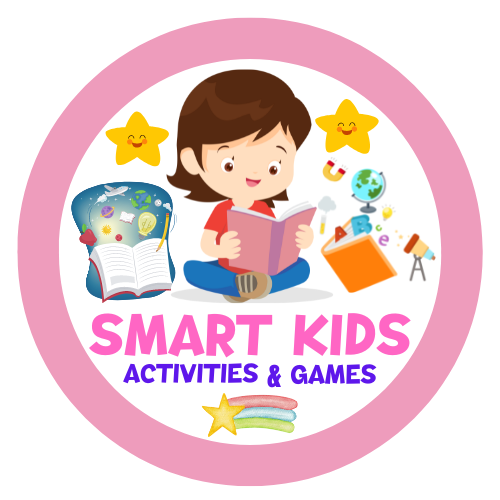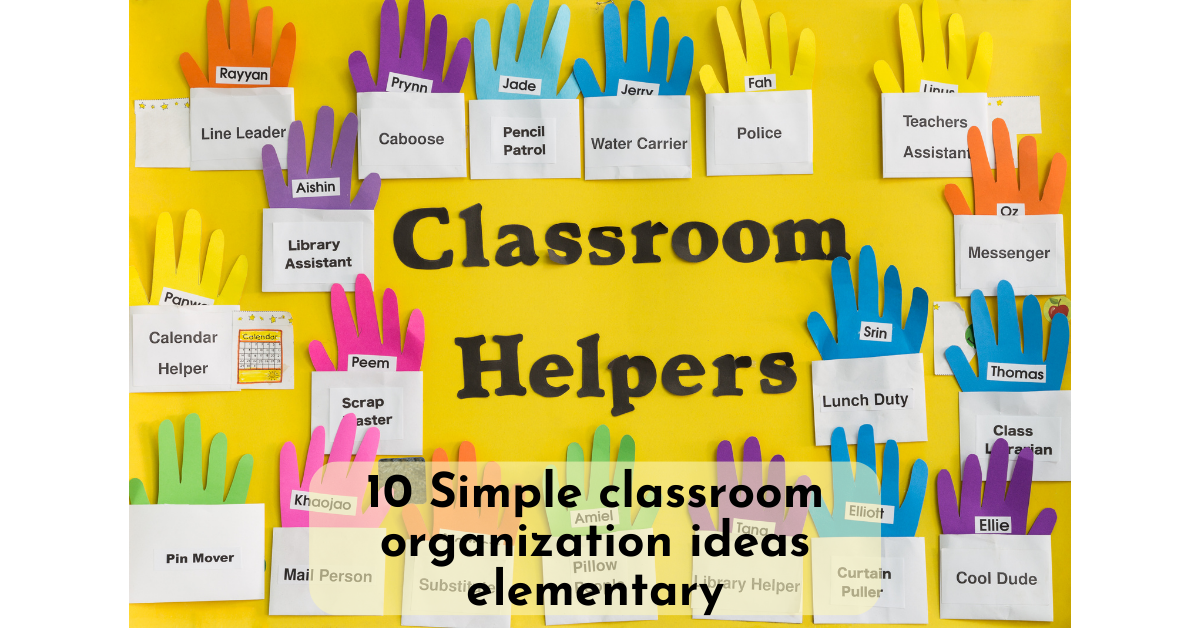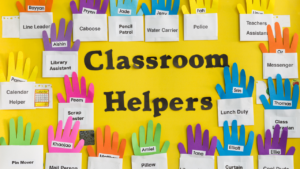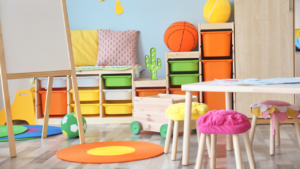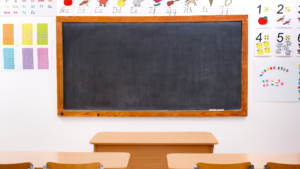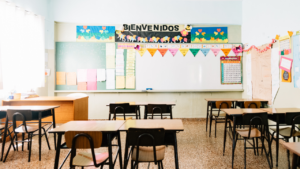Key Takeaways:
- Implementing simple organization ideas can create an efficient learning space for elementary students.
- Organizing student supplies and decluttering the classroom are important aspects of classroom organization.
- Using classroom storage solutions and effective classroom layout ideas can optimize space and enhance organization.
- Creating a structured classroom environment and utilizing time-saving techniques are key to successful classroom organization.
Use Book Bins to Organize Your Classroom Library
One effective way to organize your classroom library is by using book bins. These labeled bins can be used to categorize books alphabetically, by reading level, or by subject. By organizing your books in this way, you can easily find specific books for lessons and allow your students to choose their preferred genre. Book bins are a practical and efficient solution for classroom library organization. They not only keep your books neatly arranged but also make it easier for you and your students to locate and select books based on specific criteria. Whether you want to focus on alphabetically organized books for building vocabulary or reading level organization to cater to individual student needs, book bins provide a structured framework for your classroom library. Additionally, book bins promote a sense of ownership and responsibility among students. By assigning each bin a specific category, students can take an active role in maintaining an organized classroom library. They can assist in returning books to their designated bins, ensuring that books are always in their proper place and promoting a tidy environment for everyone. Let’s take a look at how book bins can be used for organizing books in a classroom library:- Assign a designated area for your classroom library.
- Choose book bins that are sturdy, stackable, and easy to handle.
- Label each book bin with clear and visible labels indicating the category. For example, you can use labels such as “A – F” for alphabetically organized books, “Level 1” for books at the beginner reading level, or “Science” for books related to science subject.
- Sort and place books in the appropriate book bins, based on the chosen organization method.
- Display the book bins in an easily accessible location within your classroom library.
Example of Book Bin Organization:
| Book Bin | Category |
|---|---|
| Bin 1 | Alphabetically organized books (A – F) |
| Bin 2 | Alphabetically organized books (G – L) |
| Bin 3 | Alphabetically organized books (M – R) |
| Bin 4 | Alphabetically organized books (S – Z) |
| Bin 5 | Books by reading level (Level 1) |
| Bin 6 | Books by reading level (Level 2) |
| Bin 7 | Books by reading level (Level 3) |
| Bin 8 | Subject organization (Science) |
| Bin 9 | Subject organization (History) |
| Bin 10 | Subject organization (Math) |
Utilize Library Pockets for Paper Organization
Sorting and organizing papers in a classroom can be a challenging task. Papers often get misplaced or lost, leading to unnecessary frustration. To tackle this issue, it’s essential to utilize library pockets for efficient paper organization. Library pockets are versatile tools that can be attached to various storage solutions such as manila envelopes, file folders, or portfolios. By using library pockets, you can categorize and store related worksheets and resources together, making it easy to locate them when needed. One effective way to further organize your papers is by sorting the library pockets into book bins. With this approach, you can have separate bins for different subjects, topics, or grade levels. By keeping papers neatly sorted within book bins, you’ll be able to quickly find the exact papers you need at any given time. This method not only ensures that your papers remain tidy and easily accessible but also helps create a systematic workflow for both teachers and students. When a new paper needs to be filed, simply place it in the appropriate library pocket within the corresponding book bin. Whenever you need to retrieve a specific paper, browse through the book bins to locate the relevant pocket. Organizing classroom papers using library pockets and book bins provides numerous benefits:- Easy accessibility to worksheets and related resources.
- Efficient filing and retrieval of papers.
- Reduction in clutter, leading to a more organized learning environment.
- Streamlined workflow for teachers and students.
Laminate Worksheets for Reusable Practice
Looking for a time-saving and eco-friendly approach to classroom organization? Consider laminating worksheets for reusable practice. By laminating these worksheets, you not only save paper, but also provide your students with repetitive practice opportunities. They can use dry-erase markers on the laminated surface, allowing them to erase their work and start again as many times as needed. This not only reinforces learning but also reduces waste. With laminated worksheets, you can create a versatile resource that can be used repeatedly, maximizing its value in the classroom. Here’s how it works:- Create or find worksheets that require repetitive practice, such as math problems, handwriting exercises, or spelling activities.
- Print the worksheets on regular paper.
- Laminate the worksheets using a laminating machine or self-adhesive laminating sheets. Make sure to leave a border of at least half an inch for durability.
- Once laminated, provide your students with dry-erase markers, erasers, or wipes.
- Students can then complete the exercises on the laminated worksheets using the dry-erase markers.
- After completing the practice, students can erase their work with the erasers or wipes, making the worksheets ready for the next use.
“Laminating worksheets has been a game-changer in my classroom. Not only does it save me time and money, but my students love the interactive element of using dry-erase markers. It’s a win-win!” – Mrs. Johnson, 3rd Grade Teacher
Example of laminated worksheet:
| Subject | Worksheet |
|---|---|
| Math | Laminated Addition Worksheet |
| Spelling | Laminated Word Search |
| Handwriting | Laminated Tracing Worksheet |
| Science | Laminated Vocabulary Matching |
Color-Code Your Classroom Books
Keeping track of individual student books can be challenging, especially in a class with multiple students. To overcome this, try color-coding the spines of each book or using different colored binders and bins to store them. By assigning colors to each student, you can easily collect, hand out, and find specific students’ books. Color-coding is a simple yet effective way to keep your classroom books organized.Store Anchor Charts in Labeled Laundry Hampers
Anchor charts are a valuable tool for teaching, providing visual representations of key concepts and information. However, it’s not feasible to keep all of them on the wall throughout the year. To ensure their longevity and organization, consider laminating your anchor charts. By laminating, you can protect them from wear and tear, making them durable and long-lasting. Once your anchor charts are laminated, you can roll them up for easy storage. Instead of leaving them scattered around the classroom or tucked away in cabinets, opt for a more efficient solution: labeled laundry hampers. These hampers provide a designated storage space for your anchor charts, keeping them organized and easily accessible whenever you need them.| Benefits of Storing Anchor Charts in Labeled Laundry Hampers | |
|---|---|
| 1. Space-saving: | By utilizing labeled laundry hampers, you can maximize your classroom space by storing anchor charts vertically rather than taking up wall space. |
| 2. Easy retrieval: | With labeled hampers, you can quickly identify specific anchor charts when you need them, saving time and reducing classroom disruption. |
| 3. Protection: | Laminating your anchor charts and storing them in hampers provides protection against damage, helping them stay in excellent condition for future use. |
| 4. Organization: | Hampers with clear labeling allow you to categorize anchor charts based on subject, theme, or grade level, facilitating efficient organization and easy retrieval. |
Replace Paper with Dry Erase Placemats
Minimize paper waste in your classroom by using dry erase placemats on tables and desks. These large tabletop stickers can be written on and erased multiple times, eliminating the need for paper. They are always accessible to students and can be used for various activities throughout the day. Dry erase placemats are a convenient and eco-friendly organization solution.| Dry Erase Placemats | Benefits |
|---|---|
| Reusable | Eliminates paper waste |
| Convenient | Always accessible to students |
| Versatile | Can be used for various activities |
Utilize Storage Clipboards for Individual Student Supplies
When it comes to organizing student supplies, storage clipboards are a game-changer. These versatile tools not only keep materials secure but also ensure easy access for both you and your students. With storage clipboards, you can efficiently manage personalized materials and cater to the needs of students with Individualized Education Programs (IEPs). One of the advantages of using storage clipboards is the ability to keep track of individual student goals. You can attach goal sheets, behavior charts, or any other relevant documents directly to each student’s clipboard. This way, you have their goals at your fingertips and can provide prompt support and guidance. Additionally, storage clipboards offer a practical solution for organizing personalized materials. From worksheets and graphic organizers to reference sheets and calculators, each student’s supplies can be kept neatly in their own clipboard. This not only eliminates the hassle of searching for materials but also encourages responsibility and independence in students. For IEP students, having personalized materials readily available is crucial in ensuring their learning success. Storage clipboards allow you to provide individualized support without wasting time searching for specific resources. Whether it’s visual aids, communication tools, or sensory items, having quick access to these materials can make a significant difference in supporting IEP students’ unique needs. Here is a suggested list of materials to store on each student’s storage clipboard:- Goal sheets and progress trackers: Keep track of individual student goals and monitor their progress.
- Personalized worksheets and graphic organizers: Provide individualized practice and reinforcement activities.
- Reference sheets and charts: Include relevant information, such as multiplication tables or writing prompts, for quick reference during independent work.
- Communication tools: Store visual supports, picture cards, or communication devices to assist students with communication difficulties.
- Sensory items: If needed, keep small sensory items, such as fidget toys or stress balls, on the clipboard to promote self-regulation.
Color-Code Your Electronics
Avoid the frustration of losing electronics by color-coding them. Assign each electronic device a designated spot and use matching cables of the same color. This organization technique ensures that devices are always in their proper place, and it adds a visually appealing touch to your classroom. Color-coding electronics is a simple and effective way to keep track of these valuable resources. Example of color-coding electronics:| Electronic Device | Designated Spot | Matching Cable Color |
|---|---|---|
| Laptop | Top shelf of technology cart | Green |
| Tablet | Charging station on the teacher’s desk | Blue |
| Projector | Wall-mounted shelf | Red |
| Document Camera | Underneath the teacher’s desk | Yellow |
Create a Designated Supply Station
Put an end to the mystery of disappearing supplies by creating a designated supply station in your classroom. Having a specific location for each supply item not only keeps your classroom organized but also makes it easier for students to find the materials they need. With a designated supply station, you can ensure that needed supplies are always available and create a sense of responsibility among your students. To effectively organize your classroom supplies, create a supply tracking list. This list will help you keep track of the quantity of each item and easily identify when it needs to be replenished. By regularly checking and updating your supply tracking list, you can avoid running out of essential materials. Consider using storage containers or bins to separate and categorize different types of supplies. Label each container with the specific supplies it holds to make it easier for both you and your students to locate items quickly. Clear or transparent containers are especially helpful as they allow you to see what’s inside without having to open every box or drawer. Here is an example of a supply tracking list:| Supply | Quantity |
|---|---|
| Pencils | 30 |
| Erasers | 20 |
| Glue Sticks | 15 |
| Markers | 10 |
Decorate Your Classroom with a Teacher Toolbox
Say goodbye to searching for supplies in a sea of pencils and markers by using a teacher toolbox. This decorative storage solution allows you to store supplies in labeled drawers, making them easy to locate. A teacher toolbox not only keeps your classroom organized but also adds a visually pleasing touch to your space. Organize your supplies effectively with a teacher toolbox. With a teacher toolbox, you can create a designated space for each type of supply, ensuring that everything has its place. No more rummaging through messy drawers or overcrowded bins. The labeled drawers in a teacher toolbox make it effortless for you and your students to find the materials you need quickly and efficiently. “Having a teacher toolbox in my classroom has been a game-changer. It allows me to keep all my essential supplies organized and accessible. Plus, it adds a pop of color to my room!” – Mrs. Smith, 2nd-grade teacherBenefits of a Teacher Toolbox:
- Efficient organization: Each supply has its place, making it easy to locate.
- Time-saving: No more wasted time searching for supplies.
- Visual appeal: A teacher toolbox adds a decorative touch to your classroom.
- Convenience: Labeled drawers allow for quick and effortless retrieval of materials.
| Features | Benefits |
|---|---|
| Labeled drawers | Efficient organization and easy retrieval of supplies |
| Durable construction | Long-lasting storage solution |
| Various sizes and designs | Options to fit different classroom needs and styles |
Conclusion
Creating an organized classroom is crucial for teachers who want to provide an efficient and clutter-free learning environment. By implementing the top 10 simple organization ideas for elementary classrooms, you can save time and create a structured space that enhances your students’ learning experience. From organizing your classroom library with labeled book bins to utilizing library pockets for paper organization, these time-saving techniques will help you maintain a clutter-free environment. By laminating worksheets for reuse and color-coding your classroom books, you can easily find and distribute materials, promoting a student-focused organization that maximizes learning opportunities. Not only will an organized classroom create an efficient learning space, but it will also establish a sense of structure and responsibility among your students. By designating supply stations and using storage clipboards for individual student supplies, you will cultivate a classroom environment where students take ownership of their learning materials. Furthermore, color-coding electronics and storing anchor charts in labeled laundry hampers will enhance the functionality and aesthetics of your classroom. Start implementing these classroom organization tips today and experience the benefits of a well-organized classroom. By creating an efficient learning space, maintaining a clutter-free environment, and utilizing time-saving techniques, you will provide your students with the best possible educational experience.FAQ
What are some simple classroom organization ideas for elementary teachers?
Here are 10 simple organization ideas for elementary classrooms:
How can I organize my classroom library?
Use book bins to categorize books alphabetically, by reading level, or by subject.
What is a useful organization technique for managing classroom papers?
Utilize library pockets to store related worksheets and resources.
How can I save time and paper with worksheets?
Laminate worksheets for reusable practice with dry-erase markers.
How can I keep track of individual student books?
Color-code the spines of each book or use different colored binders and bins.
What is a practical way to store and organize anchor charts?
Laminate them and roll them up, then place them in labeled laundry hampers.
How can I minimize paper waste in my classroom?
Use dry erase placemats on tables and desks for multiple uses.
How can I organize individual student supplies?
Utilize storage clipboards for each student’s materials.
How can I keep track of electronics in the classroom?
Color-code the devices and use matching cables for designated spots.
How can I create a consistent supply station in my classroom?
Have a specific location for each supply item and use a supply tracking list.
How can a teacher toolbox help with classroom organization?
A teacher toolbox with labeled drawers keeps supplies organized and easily accessible.
How important is classroom organization for efficient learning?
Classroom organization is essential in creating a structured and clutter-free environment that saves time and focuses on students’ needs.
Download free activities and teaching resources Click Here
You may also be interested in
Mastering Education: Effective Classroom Management Strategies for New Teachers
Fun and Engaging Methods: How to Teach Maths in an Interesting Way
Effective Tips on How to Promote Literacy in Early Childhood
Effective Classroom Teaching Strategies for Optimal Learning
Exploring Modern Teacher Aids: Enhancing Classroom Success
Empowering Future Learners with Early Childhood Education
Source Links
- https://www.weareteachers.com/classroom-organization-hacks/
- https://www.prodigygame.com/main-en/blog/classroom-organization/
- https://kidsactivitiesblog.com/91940/classroom-organization-hacks/

